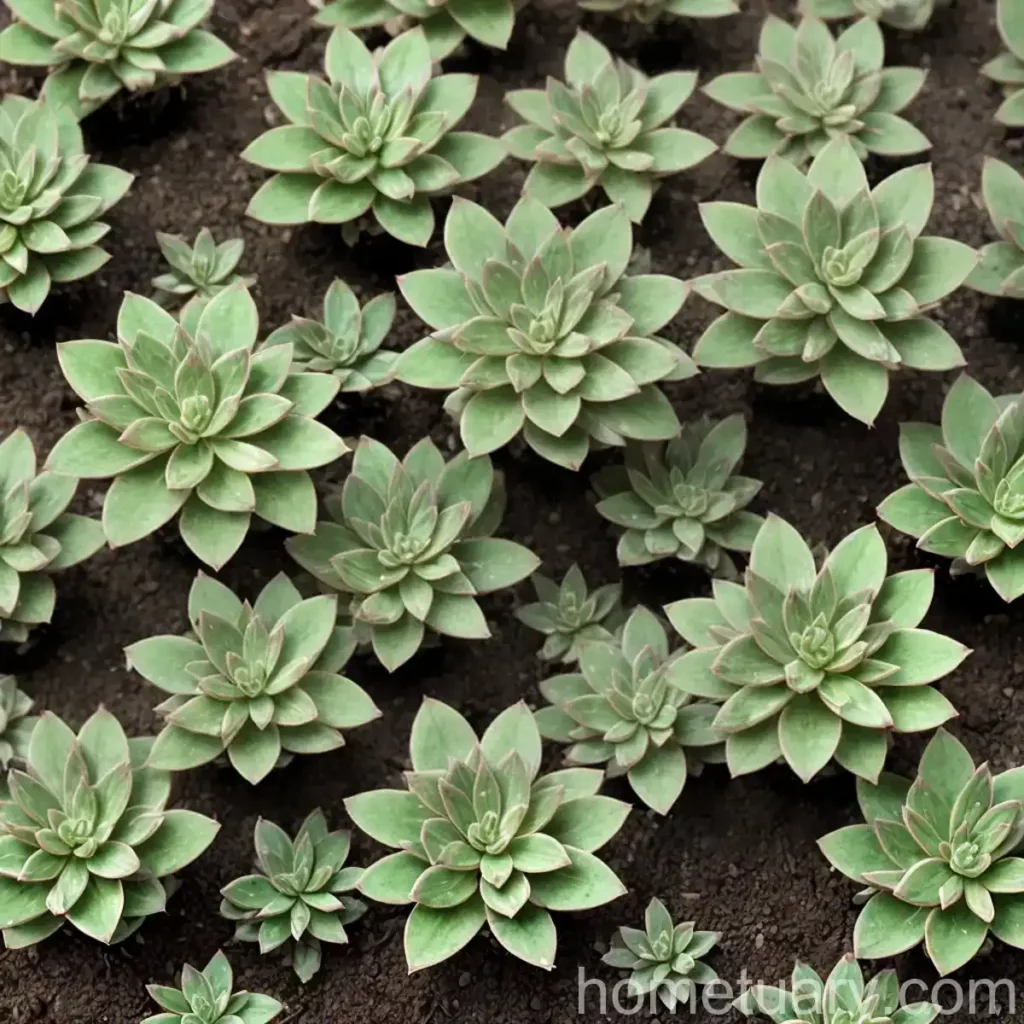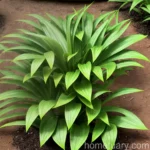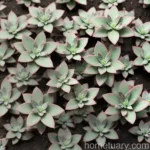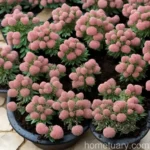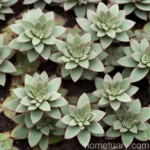The Fascinating World of Stonecrop (Hylotelephium telephium ‘Samuel Oliphant’)
The Stonecrop (Hylotelephium telephium ‘Samuel Oliphant’) is a wonderfully versatile and resilient plant that has captured the hearts of both garden enthusiasts and plant scientists alike. With its striking appearance and myriad of cultural and horticultural uses, the Stonecrop has established itself as a favorite in the world of landscaping and horticulture. In this comprehensive guide, we will delve into the captivating world of Stonecrop, exploring its characteristics, care requirements, uses, and much more.
What is Stonecrop (Hylotelephium telephium ‘Samuel Oliphant’)?
The Stonecrop (Hylotelephium telephium ‘Samuel Oliphant’) is a member of the Crassulaceae family, commonly known as the stonecrop family. This perennial succulent plant is native to Europe and Asia and is widely celebrated for its rugged and drought-tolerant nature. It is a low-maintenance plant that thrives in a variety of conditions, making it a popular choice for both experienced and novice gardeners.
The ‘Samuel Oliphant’ variety of Stonecrop is particularly noteworthy for its stunning features, including dense clusters of bright pink flowers that bloom from late summer to fall. Its foliage is adorned with shades of blue-green, adding a touch of elegance to any garden or landscape.
Key Takeaways – Stonecrop (Hylotelephium telephium ‘Samuel Oliphant’)
Before we delve into the various aspects of Stonecrop care and cultivation, let’s take a moment to highlight some key takeaways about this remarkable plant:
– It belongs to the Crassulaceae family and is native to Europe and Asia.
– The ‘Samuel Oliphant’ variety is characterized by vibrant pink flowers and blue-green foliage.
– Stonecrop is known for its resilience, drought tolerance, and adaptability to various growing conditions.
Now, let’s explore the intricacies of caring for and cultivating Stonecrop, considering its culture, uses, and essential requirements such as water, sunlight, fertilizer, soil, and pruning.
Stonecrop Culture
Understanding the cultural requirements of Stonecrop is essential for ensuring its optimal growth and development. Here are some key considerations when it comes to the culture of this versatile plant:
Water
Stonecrop is remarkably resilient to dry conditions and can thrive with minimal water once established. However, it is crucial to ensure that the plant receives adequate moisture during its initial growth stages and in prolonged periods of drought. As a general guideline, watering the plant deeply but infrequently is recommended to encourage healthy root development.
Sunlight
This plant thrives in full sunlight and requires at least six hours of direct sun exposure daily. In warmer climates, some afternoon shade can be beneficial to prevent leaf scorching. Providing the right balance of sunlight is crucial for promoting robust growth and vibrant flower production.
Fertilizer
Stonecrop is not particularly demanding when it comes to fertilization. A balanced, slow-release fertilizer applied in early spring can support healthy growth and flowering. However, excessive fertilization should be avoided, as it can lead to lush foliage at the expense of flower production.
Soil
Well-draining soil is essential for Stonecrop, as it is susceptible to root rot in waterlogged conditions. A sandy or gravelly soil mixture with a slightly acidic to neutral pH is ideal for promoting optimal growth. Amending the soil with organic matter can enhance its structure and drainage capabilities, creating a favorable environment for the plant.
Pruning
Pruning Stonecrop is relatively minimal and primarily involves the removal of spent flowers and dead foliage. Pruning can be performed in late fall or early spring to tidy up the plant and promote a neat appearance. Additionally, dividing the plant every few years can help rejuvenate its growth and prevent overcrowding.
Uses of Stonecrop
Beyond its ornamental value, Stonecrop has a range of uses that make it an invaluable addition to various landscapes and horticultural settings. Here are some notable applications of this versatile plant:
– Groundcover: Stonecrop’s spreading habit and drought tolerance make it an excellent choice for groundcover in rock gardens, slopes, and arid landscapes.
– Erosion Control: Its robust root system helps stabilize soil, making it an effective erosion control agent in challenging terrain.
– Container Gardening: Stonecrop’s compact growth habit and attractive foliage make it well-suited for container gardening, adding a touch of elegance to patios, balconies, and outdoor spaces.
– Pollinator Attraction: The nectar-rich flowers of Stonecrop attract pollinators such as bees and butterflies, contributing to the ecological diversity of gardens and natural habitats.
– Medicinal Properties: In traditional medicine, certain species of Stonecrop have been used for their purported medicinal properties, which include anti-inflammatory and wound-healing effects.
Stonecrop Propagation
Propagating Stonecrop can be an enjoyable and rewarding endeavor, allowing gardeners to expand their plant collection and share the beauty of this resilient species with others. Here are some popular methods of propagating Stonecrop:
-
Division: Dividing mature Stonecrop plants in early spring or fall is a simple and effective way to propagate the species. Carefully separating the rhizomes or offsets and replanting them in suitable locations can promote new growth and expansion.
-
Cuttings: Stem cuttings can be taken from healthy, established plants and rooted in a well-draining potting mix. This method is particularly useful for producing multiple new plants from a single parent specimen.
-
Seed Propagation: While Stonecrop can be grown from seeds, this method may take longer to yield mature plants compared to division and cuttings. Sowing seeds in a well-prepared seedbed or container and providing optimal growing conditions can result in successful germination and establishment.
Regardless of the propagation method chosen, providing the right environmental conditions, such as adequate moisture and warmth, is crucial for supporting the development of new Stonecrop plants.
Stonecrop in Containers
Cultivating Stonecrop in containers opens up myriad possibilities for incorporating this captivating plant into various settings, from urban balconies to spacious outdoor patios. Here are some essential considerations for growing Stonecrop in containers:
-
Container Selection: Choose containers that provide ample drainage and are of appropriate size to accommodate the growth habit of the chosen Stonecrop variety. Terra cotta or resin pots are popular choices, as they offer good airflow to the roots.
-
Potting Mix: Select a well-draining potting mix tailored for succulent plants or create a custom mix by combining coarse sand, perlite, and a quality potting soil. This mix will provide the ideal growing environment for Stonecrop in a container setting.
-
Watering: Containers may require more frequent watering compared to plants grown in the ground, as they can dry out more quickly. However, it is still essential to avoid overwatering and ensure that excess moisture can freely drain from the pot.
-
Sunlight: Position the containers in a location that receives ample sunlight, ideally at least six hours of direct sun exposure per day. In hotter climates, some protection from intense afternoon sun may be beneficial to prevent heat stress.
Cultivating Stonecrop in containers offers flexibility and creativity, allowing individuals to bring the beauty of this plant to diverse indoor and outdoor spaces, from small apartments to expansive gardens.
The Popularity of Stonecrop
The increasing popularity of Stonecrop can be attributed to its numerous appealing characteristics and versatile uses, making it a sought-after plant in various horticultural and landscaping applications. Let’s explore some factors contributing to the enduring appeal of Stonecrop:
- Low Maintenance: Stonecrop’s ability to thrive with minimal intervention and low water requirements make it an attractive choice for busy gardeners and landscape enthusiasts.
- Drought Tolerance: In an era of increasing water conservation awareness, the drought-tolerant nature of Stonecrop contributes to its appeal, especially in arid and water-restricted regions.
- Aesthetics: Vibrant flowers, attractive foliage, and a variety of available cultivars make Stonecrop an aesthetically pleasing addition to gardens and landscapes, enhancing their visual appeal.
- Versatility: The various uses of Stonecrop, such as groundcover, container gardening, and erosion control, showcase its adaptability and flexibility in diverse settings.
Common Diseases of Stonecrop
While Stonecrop is generally resistant to many pests and diseases, there are some issues that gardeners should be aware of to ensure the plant’s continued health and vigor. Here are some common diseases that can affect Stonecrop and their associated symptoms:
Powdery Mildew (Erysiphe cichoracearum)
Powdery mildew can appear as a white, powdery coating on the leaves of affected plants. It is often caused by poor air circulation and high humidity levels and can detract from the plant’s visual appeal.
Crown Rot
Excessive moisture and poor soil drainage can lead to crown rot in Stonecrop, resulting in wilting, yellowing of foliage, and eventual collapse of the plant. Addressing soil drainage issues and avoiding waterlogged conditions can help prevent this disease.
Leaf Spot (Phyllosticta spp.)
Leaf spot can manifest as dark, sunken lesions on the leaves of Stonecrop, potentially compromising the plant’s overall health. Ensuring proper air circulation and removing affected foliage can help manage this issue.
Root Rot (Pythium spp., Phytophthora spp.)
Overwatering and waterlogged soil can create favorable conditions for root rot pathogens, leading to decay and decline in the plant’s root system. Monitoring soil moisture and providing well-draining soil are essential for preventing this disease.
Early detection and prompt intervention are vital for addressing these diseases and preventing their spread to neighboring plants. Implementing cultural practices such as proper spacing, adequate airflow, and well-draining soil can contribute to the overall health and resilience of Stonecrop.
Disease Diagnosis in Stonecrop
Accurately diagnosing diseases in Stonecrop is essential for implementing targeted management strategies and preventing the spread of pathogens to other plants. Here are some key steps in diagnosing diseases and disorders in Stonecrop:
Visual Inspection
Carefully examine the foliage, stems, and overall appearance of the plant to identify any abnormal symptoms such as discoloration, lesions, wilting, or stunted growth. Consider factors such as weather conditions, watering practices, and recent environmental changes.
Symptom Comparison
Compare observed symptoms with known disease profiles and characteristic signs of common pathogens that affect Stonecrop, such as powdery mildew, crown rot, and leaf spot. Note any patterns or specific indicators that may point to a particular disease.
Laboratory Analysis
If necessary, collect samples of affected plant tissue and submit them to a diagnostic laboratory for analysis. Professional testing can help identify the presence of specific pathogens and provide insights into appropriate management measures.
Integrated Management
Integrate disease diagnosis into a comprehensive plant care plan that includes cultural, biological, and chemical control methods. Addressing underlying cultural issues and promoting plant health can contribute to disease prevention and management over the long term.
By taking a systematic approach to disease diagnosis, gardeners and plant enthusiasts can gather valuable information to support the health and vitality of their Stonecrop specimens.
Common Pests Affecting Stonecrop
While Stonecrop is generally resistant to many pests, there are some insects and invertebrates that can pose potential threats to its well-being. Here are some common pests affecting Stonecrop and their associated symptoms:
Aphids
Aphids are small, soft-bodied insects that may cluster on the undersides of leaves and along stems, sucking sap from the plant and causing distorted growth and yellowing of foliage.
Spider Mites
Spider mites are tiny arachnids that can create fine webbing on the leaves of Stonecrop and cause stippling, yellowing, and premature leaf drop as a result of their feeding activities.
Slugs and Snails
These mollusks can feed on the tender foliage of Stonecrop, leaving behind ragged-edged holes and damage. They are more active during periods of high humidity and moist conditions.
Caterpillars
Certain caterpillar species may feed on the leaves of Stonecrop, resulting in irregular holes and damage to the foliage. Early detection and manual removal of caterpillars can help mitigate their impact.
Implementing proactive pest monitoring and adopting integrated pest management practices can help maintain an optimal balance and minimize the impact of pest pressures on Stonecrop.
Botanist’s Tips for Growing Stonecrop Successfully
Seasoned botanists and horticulturists often have valuable insights and tips for cultivating Stonecrop effectively. Here are some expert recommendations to enhance the growth and vitality of Stonecrop specimens:
-
Optimal Soil Conditions: Provide well-draining soil with a sandy or gravelly texture to promote healthy root development and prevent waterlogging.
-
Adequate Sunlight: Ensure that Stonecrop receives ample sunlight, especially during its active growth period, to encourage robust flowering and compact growth habit.
-
Moderate Fertilization: Avoid excessive fertilization, especially with high-nitrogen products, as it can lead to excessive foliage growth at the expense of flower production.
-
Slope Planting: Consider incorporating Stonecrop in slopes and elevated areas to capitalize on its erosion control capabilities and striking visual appeal.
-
Seasonal Maintenance: Monitor the plant throughout the year, performing timely pruning, dividing, and maintenance tasks to support its long-term health and vigor.
By applying these expert tips and practices, gardeners can optimize the growing conditions for Stonecrop and unlock its full potential in various horticultural settings.
Fun Facts About Stonecrop
Discovering the intriguing and lesser-known aspects of Stonecrop can deepen one’s appreciation for this remarkable plant. Here are some fun facts about Stonecrop that showcase its unique character and cultural significance:
-
In folklore and traditional beliefs, certain species of Stonecrop were associated with protective attributes, with the plant being placed on rooftops to ward off evil spirits.
-
Stonecrop has significant ecological value as a nectar source for pollinators, contributing to the overall biodiversity and vitality of gardens and natural habitats.
-
Certain varieties of Stonecrop exhibit striking color variations, ranging from vibrant shades of pink and red to soft pastels and variegated patterns, adding diversity to garden landscapes.
-
The resilience and adaptability of Stonecrop have made it a favorite among landscape designers for creating low-maintenance and visually captivating installations, such as living walls and vertical gardens.
These fun facts offer a glimpse into the rich tapestry of Stonecrop’s cultural, ecological, and horticultural significance, shedding light on its multifaceted nature.
Links to External Resources
- Royal Horticultural Society – Stonecrop Growing Guide
- University of Missouri Extension – Stonecrops for the Home Landscape
- American Horticultural Society – The Well-Tempered Garden: Stonecrops
- The National Gardening Association – Tips for Growing Stonecrop (Hylotelephium telephium)
- North Carolina State University Cooperative Extension – Propagating Stonecrop
In conclusion, the Stonecrop (Hylotelephium telephium ‘Samuel Oliphant’) stands as a testament to nature’s ingenuity, offering a delightful blend of beauty, resilience, and versatility. Whether adorning rock gardens, contributing to erosion control, or gracing containers with its vibrant presence, Stonecrop continues to captivate and inspire individuals worldwide. By understanding its cultural requirements, propagation methods, uses, and unique attributes, we can further appreciate the enduring allure of this exceptional plant.
Let the remarkable Stonecrop find its well-deserved place in gardens, landscapes, and hearts, serving as a symbol of endurance, elegance, and botanical fascination.
Now would be a good time to experiment with your Stonecrop. Try different potting mix, different shades of sunlight, or different watering schedules. By experimenting and observing the results, you can gain a better understanding of the unique needs of your Stonecrop plant.

